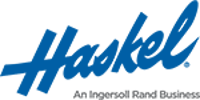When it comes to workplace noise levels, how loud is too loud? Ear-damaging workplace noise is a widespread problem that impacts employees in many lines of work. According to the Occupational Safety and Health Organization (OSHA), millions of workers are exposed to potentially damaging noise every year. While noise-induced hearing loss (NIHL) is 100% preventable, many employers don’t take the right precautions to keep their employees safe.
As this problem has become more acknowledged worldwide, multiple countries have introduced protective measures against NIHL, penalizing and fining employers for not protecting their employees from hazardous noise.
OSHA Exposure Limit
Exposure to loud noise kills the nerve endings in your outer ear. Continuous exposure results in extensive nerve damage, resulting in permanent hearing loss. High noise levels are unavoidable in some workplace settings, including manufacturing facilities, but hearing damage is avoidable with proper ear protection.
Global OSHA regulations aiming to protect employees from noise related workplace injuries have established permissible exposure noise level of 85 decibels (dBA) or less throughout an eight-hour workday.
Under a Hearing Conservation Program, employers must take precautionary measures such as:
- measuring the noise level
- offering free annual hearing tests
- providing hearing protection and training
- evaluating safety measures
If these practices are not in place, companies must ensure that workers are exposed to less than 85dBa by changing work practices, tools, and equipment.
Designing Equipment for a Safer Workplace Environment
Safety is at the heart of what we do and given the potential dangers workers experience every day, Haskel engineers designed our newest gas booster to operate at unmatched low noise levels.



